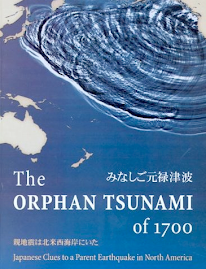
Saturday, August 29, 2009
Physical goods replaced by representations
I think this is the endgame

Honey bees may have been killed by virus infections
Wednesday, August 19, 2009
Hell is the impossibility of reason
How do they train themselves to be so impervious to reality? It begins, I suspect, with religion. They are taught from a young age that it is good to have "faith" – which is, by definition, a belief without any evidence to back it up. You don't have "faith" that Australia exists, or that fire burns: you have evidence. You only need "faith" to believe the untrue or unprovable. Indeed, they are taught that faith is the highest aspiration and most noble cause. Is it any surprise this then percolates into their political views? Faith-based thinking spreads and contaminates the rational.
Saturday, August 8, 2009
Confabulation getting worse
Saving energy can be be better than free
Thursday, August 6, 2009
Plants potted in peat moss may need to be repotted
Wednesday, August 5, 2009
The purpose of the spleen
Researchers have now shown that the spleen is a reservoir for immune system cells called monocytes, and that in the event of serious trauma like a heart attack, gashing wound, or microbial invasion, the spleen will disgorge the monocytes into the bloodstream to tackle the crisis.
http://www.nytimes.com/2009/08/04/science/04angier.html?_r=1&em
Monday, August 3, 2009
Effort can sometimes trump ability
Population bombs... better get nearly free energy quickly
What’s more interesting is that the overall number, whatever you choose, could be a red herring. Many population experts foresee the next few decades evolving in a way that is very different from the global-scale, catastrophic “population bomb” concept that caught hold in the 1960s.
What they depict is more like a dangerous scattering of cluster bombs, as the world splits into two types of countries: those with aging, shrinking populations, like Japan and much of Europe, and those regions, like most of Africa and parts of south Asia, still mired in poverty, disease, illiteracy or government dysfunction with resulting high birth and death rates.
http://dotearth.blogs.nytimes.com/2007/10/25/the-population-cluster-bomb/
Lightship!
RPI Prof Leik Myrabo Lightcraft Research
Sunday, August 2, 2009
Ant mimicking spiders

Behavior controlled biochemically to astonishing specificity
They are not stupid; they are lying shills
"WE'VE got healthcare that is better than anywhere else in the world," boasted conservative US pundit Rush Limbaugh in an interview with Fox News on 23 July. Many politicians have been echoing this claim in recent days, as Congress debates reforming the nation's healthcare. Sadly, it is not true.

Right answer, wrong question
Everything on the Net needs to be named rationally and dated
Why does food in a can not spoil?

Betelgeuse may go supernova!
Nobel Laureate Charles Townes announced evidence that 15 consecutive years of stellar contraction has been observed by UC Berkeley's Infrared Spatial Interferometer (ISI) atop Mt. Wilson Observatory in Southern California. Reported on June 9, 2009, the star has shrunk 15% since 1993 with an increasing rate. The average speed at which the radius of the star is shrinking over the last 15 years is approximately 210 - 219 m/s (470-490 mph).[24]
According to the university, Betelgeuse's radius is about 5.5 A.U.s, and the star's radius has shrunk by a distance equal to half an astronomical unit, or about the orbit of Venus.[25] Some theorists[who?] have speculated that this behavior is expected for a star at the beginning of the gravitational collapse at the end of its life.[citation needed] The mass of Betelgeuse puts it in range to become a neutron star or possibly a black hole.
http://en.wikipedia.org/wiki/Betelgeuse
